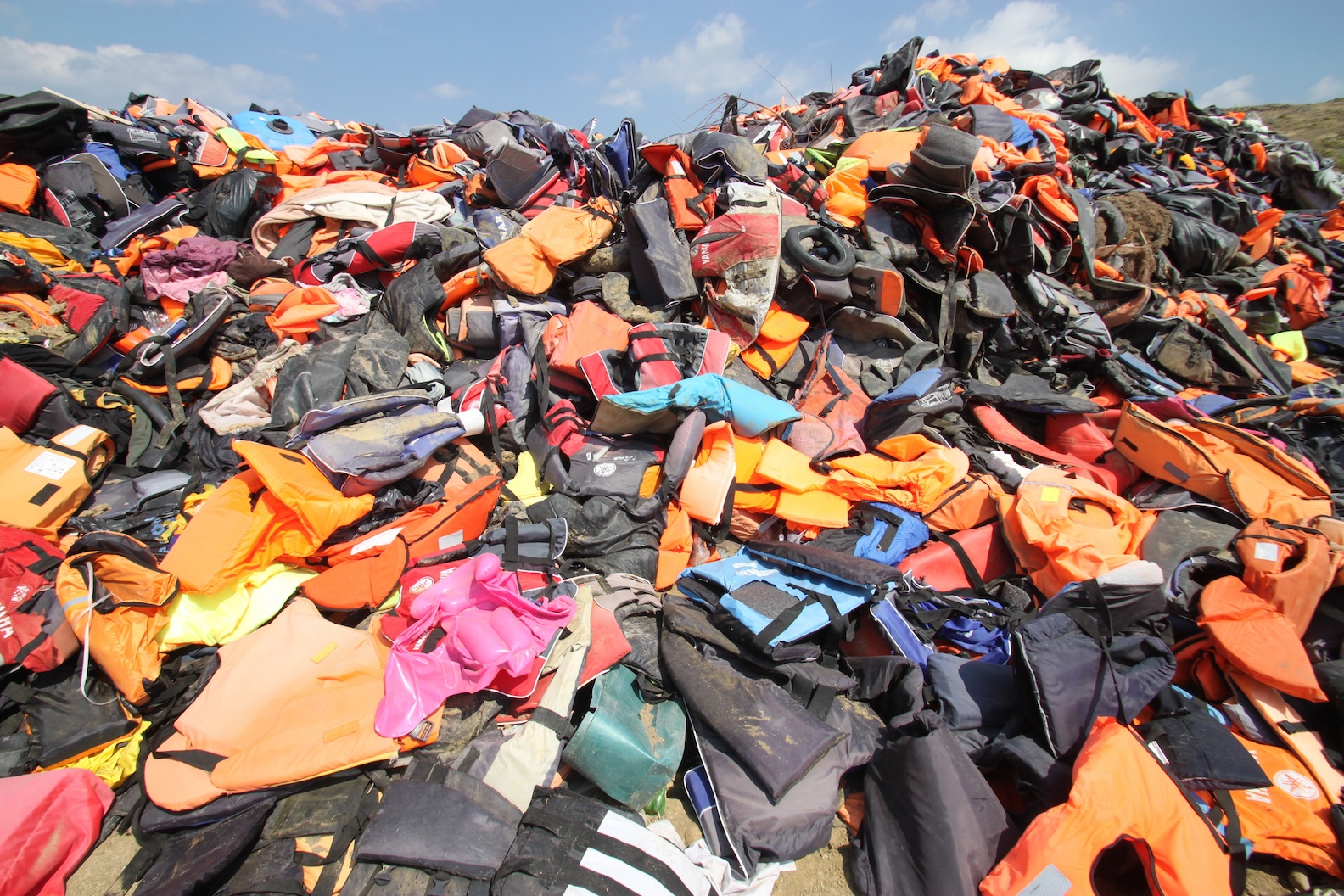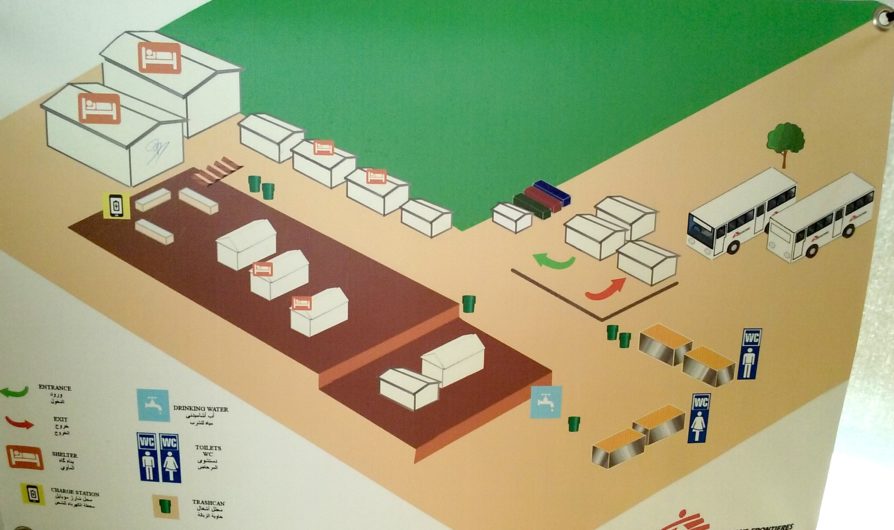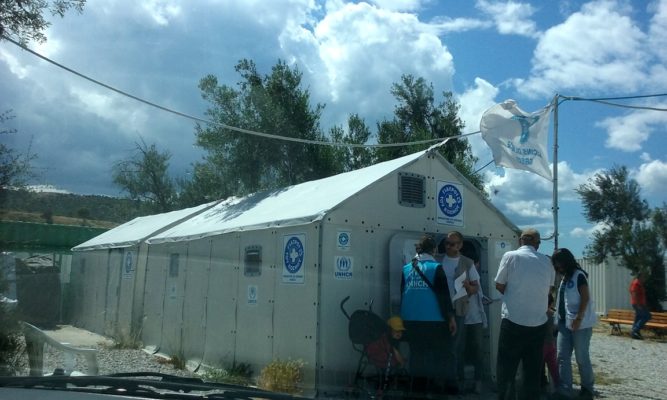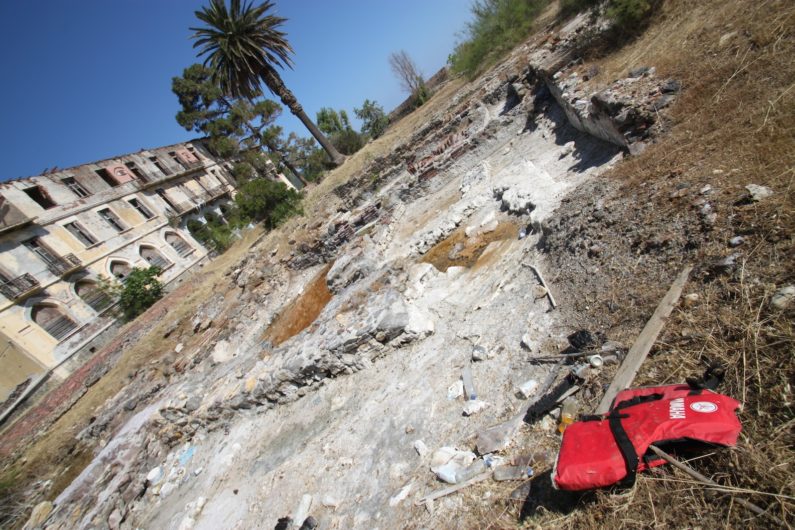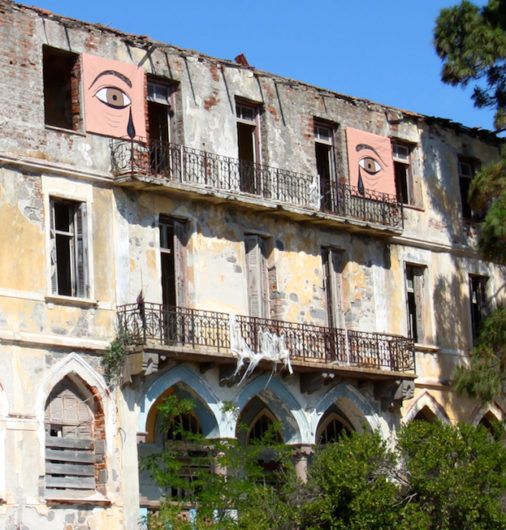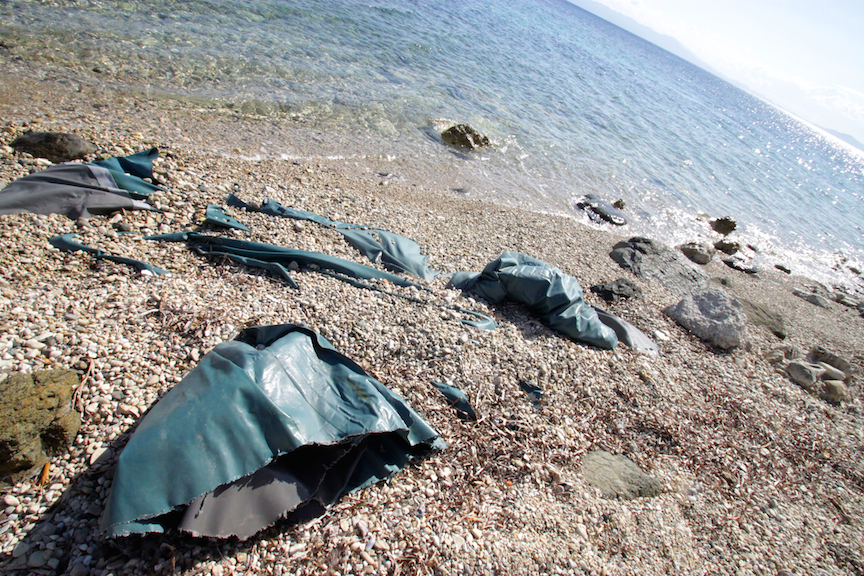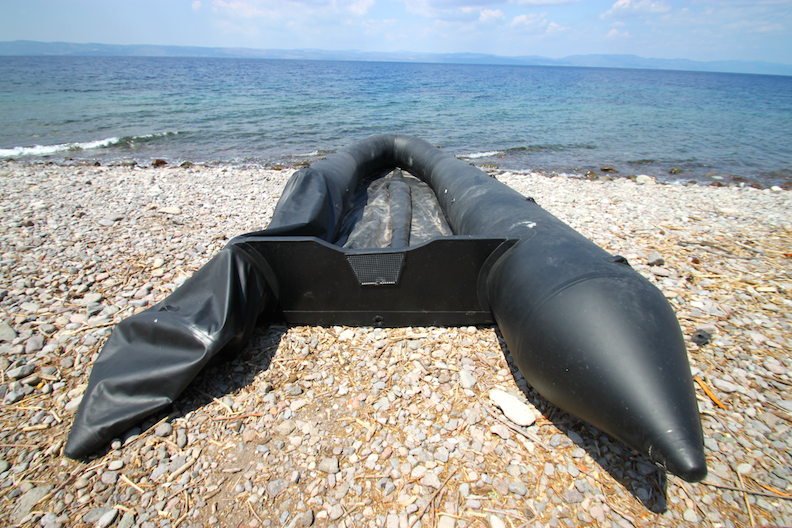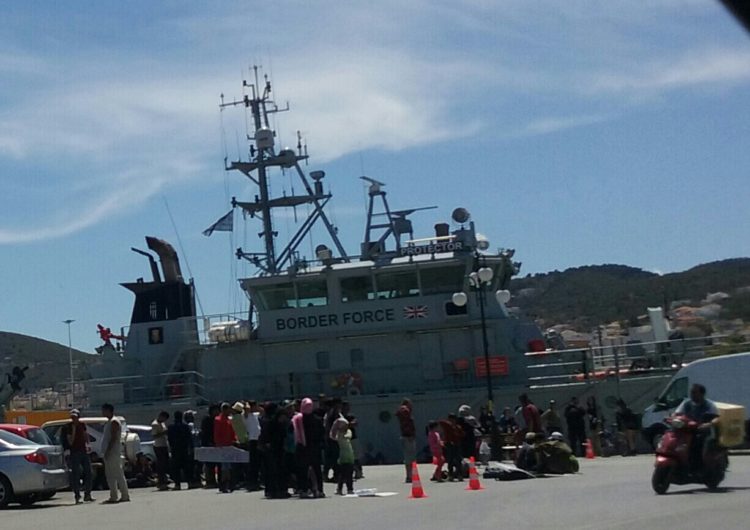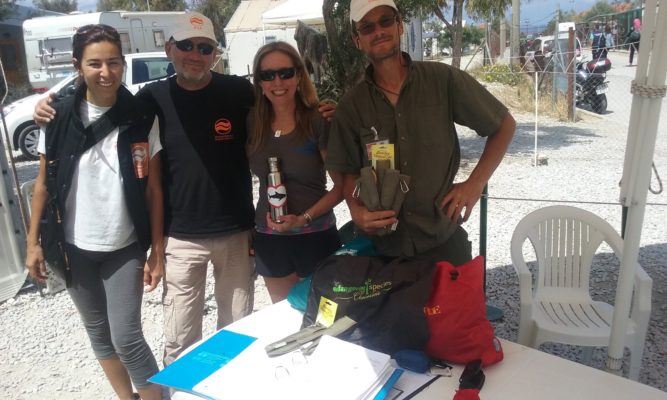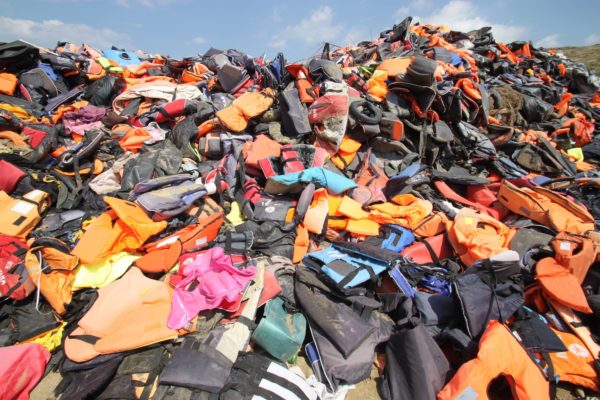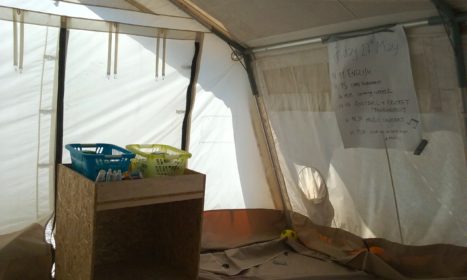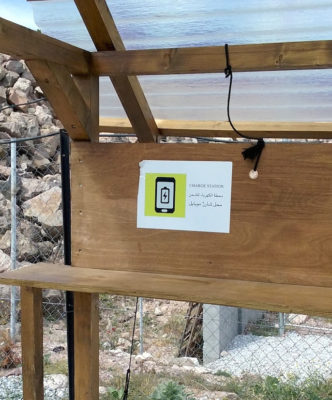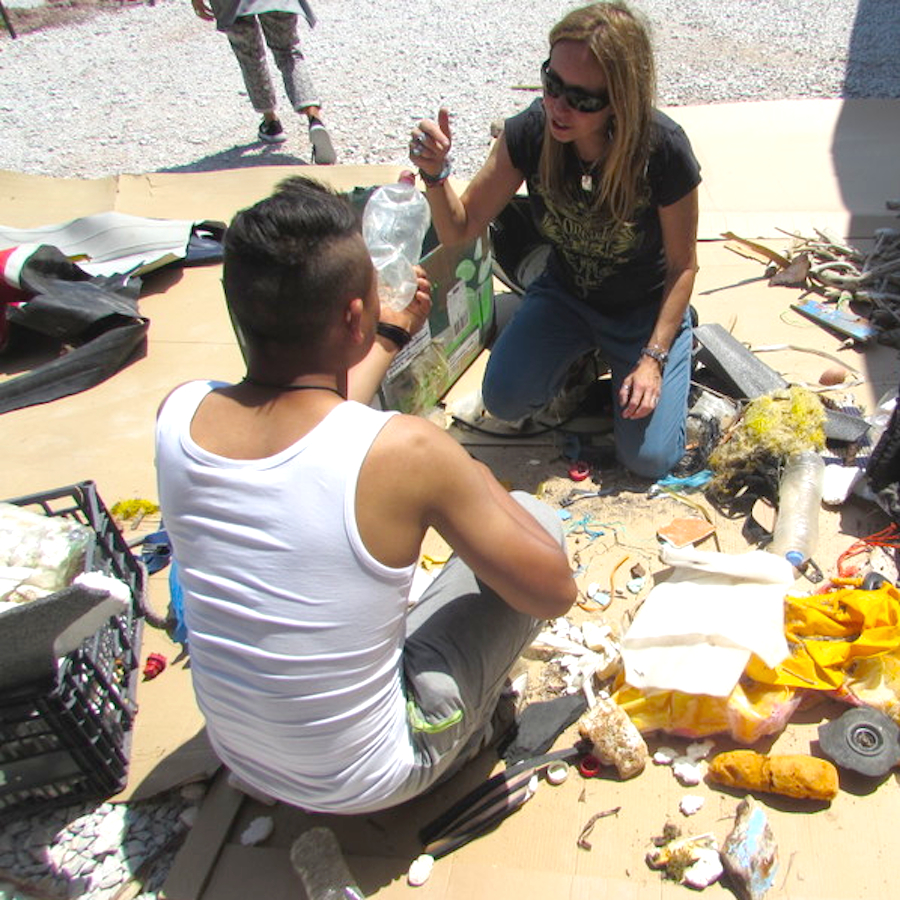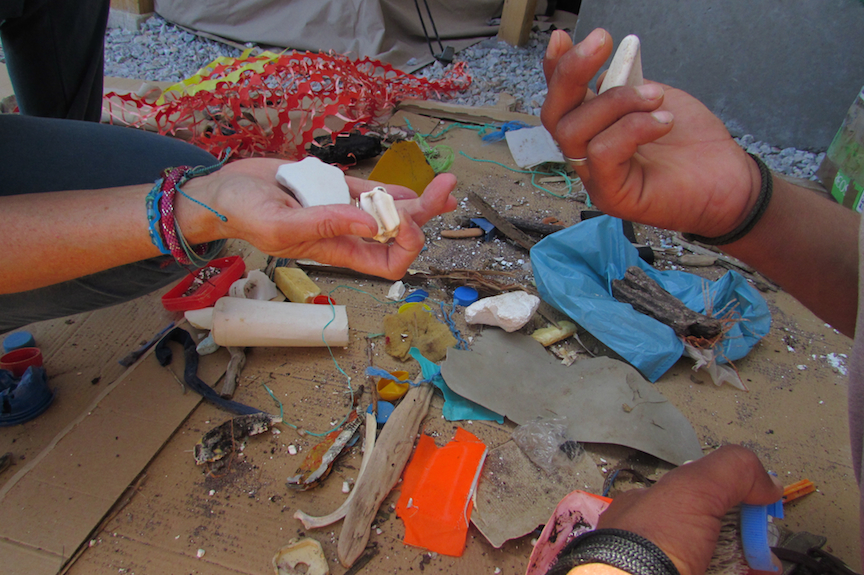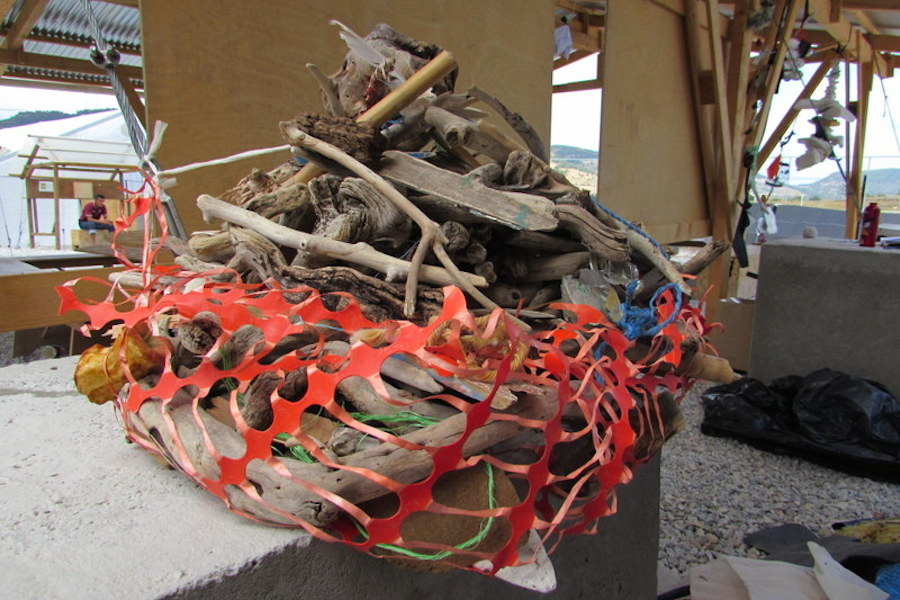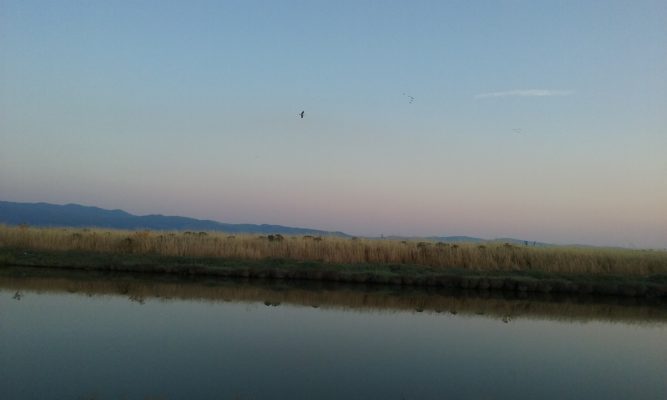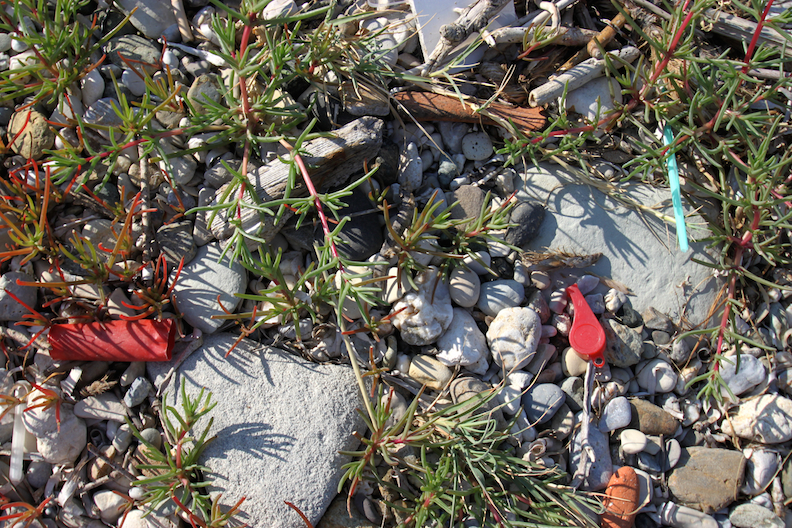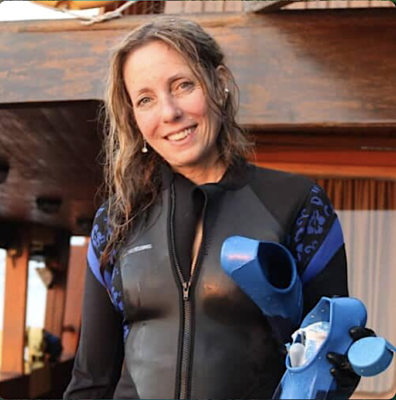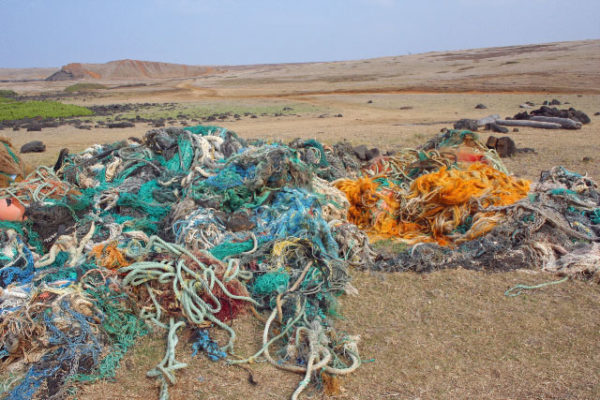When we submitted a proposal to speak about Plastic Free Island at the World Islands Conference of ISISA (the International Small Island Studies Association) on the island of Lesvos over two years ago, ironically themed “Island Utopias”, there were none of the nearly 500,000 refugees that eventually thronged the shores of that Greek island just 6 miles offshore from Turkey in the Aegean Sea. An island of immense beauty, home of the legendary first poet Sappho of millennia past and current home to a thriving lesbian enclave, Lesvos became the unlikely ground zero for the first large climate refugee event in the changed world of today.
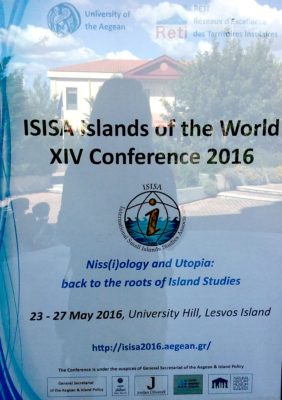
It is critical to understand the refugee crisis as first and foremost a climate crisis. Prolonged drought in Syria forced hundreds of 1000s of people from the countryside to the overcrowded cities that fueled unrest and sparked a civil war. These desperate masses took to all manner of floating plastic vessels, severely overloaded by the smugglers, and plunged toward the welcoming shores of Greece, a country long known for its openness and hospitality, and one of the heaviest hit islands was Lesvos. This massive climate migration is just the newest wave of the ocean plastic disaster, as hundreds of thousands upon thousands of plastic life vests, boats, rafts, flotation devices of all possible types washed ashore ferrying displaced refugees to a safer place. And the plastic tsunami continued on land as disposable plastic in the form of water bottles, plates, cups and cutlery kept them alive . . .
By May, several years into the refugee onslaught, Lesvos had transformed this tragic stew of human grief into efficiently functioning camp ‘villages.’ In my short time on the island, between speaking at the ISISA conference about the ocean plastic disaster, art and human transformation to learning of the special critical issues facing small island nations of the world, I was able to gain access to two refugee camps on Lesvos. While this may seem a simple undertaking, it actually took extreme networking, outreach effort and a bunch of good luck: since the enormity of the wave of humanitarian aid and volunteers that followed the human migration wave, Greek and EU governments were forced to strictly regulate volunteer access and gifting of supplies to merely manage the volume and protect their new wards.
Before I was able to make contact with the camps, I patrolled the beaches, cleaning and documenting the plastic evidences. Though the vast majority of the sheer tonnage of life vests had been removed and physically transported to a centralized location, there were still stray vests nearly everywhere I went. These blaze orange and red + blue vests echoed with a chill surrogacy for they each conveyed a human life and perhaps, a death.
Equally disturbing were the destroyed rafts and boats that I saw beached on the two closest shorepoints to Turkey, near Mytilene, the capital city at 9 miles offshore from Turkey, and on the northern shore, a mere 6 miles away, a distance that looked provocatively swimmable. Curiously, I found slashed strips of boats more often than whole or simply deflated rafts. I found out from the editor of the one of the islands independent presses that the smugglers often forced the refugees to slash the boats themselves so they could not be used again. I also found several box cutters and knives possibly used for this purpose.
Tensions had escalated greatly recently on Lesvos as both Greece and Turkey closed their borders, and the largest refugee camp, Idomeni, was being dismantled. The border closings meant that refugees in Turkey were not allowed to leave for Greece in their boats and were being detained there, and the refugees already in Greece were not allowed to depart for other EU countries. NATO forces now controlled the borders and the open sea between was being patrolled by large military vessels flagged as BORDER FORCE and PROTECTOR. One of these ships had harbored in Mytilene and armed military presence was overseeing a large group of protestors that had formed, carrying placards declaring “MORIA IS JAIL!!” and “We want to go to ATHENS.” Moria is the one camp no one is able to visit, it is the closed detention center for unregistered refugees and they are not afforded the privileges that the other open refugee camps allow, where residents are free to come and go. As I slowed to photograph the scene, an armed police officer chased me off, grabbing for my camera.
After days of following dead-ends, I connected with a wonderful person with a car and knowledge of the island. Despite warnings against doing this, we drove right up to Kara Tepe camp and approached the guard station to request to enter with the donations I was determined to deliver to the refugees. I had carried along with me 100s of useful items donated by Chicobags: 200 bamboo utensil sets and 40 strong and reusable Chicobags, which I managed to successfully deliver by talking my way in to the camp through the guards and bypassing the lengthy procedure involving official applications in city offices and waiting for weeks for approval.
Kara Tepe is a very well run, clean and joyous village for families, with its own Greek ‘mayor’. The donation was accepted by an international aid group called Humanitarian Support Agency who controls all the material and food goods entering the camp. The aid workers were extremely excited and grateful for the donations, as they were very very useful for the families. Truthfully, they could use a lot more.
***
To get the full picture of this unprecedented upheaval, I located the ‘graveyard of the life vests’ as it is known, essentially a city landfill up in the hills behind a small town on the northern coast. This was the final resting spot for the masses of life vests and floatation devices, including the broken fiberglass hulls of boats, that the vigilant citizens of Lesvos and the humanitarian aid workers had cleared from the beaches over the past year. Each vest had held a person. I was not prepared for the monumentality of what I saw, an entire landscape of mountains and hills of orange and red vests, warning colors, piled high overhead and spreading for acres. I wandered among these mountains of plastic waste, climbing 20 feet up to the top of a pile to sit among them, unable to comprehend the sheer vastness of numbers, seeing each vest as a life, a person with hope for something better. The spectacle of it was overwhelming, and I realized the new ocean plastic drifters are human beings, forced to take desperate leaps off shores into an unknown fate. And this one island of Lesvos had had more than 500,000 human drifters wash upon their shores.
Climbing among the tumble of life vests, I was struck by one in particular, bright pink and no taller than 24″. It was an inflatable pool floaty, a water toy meant for a 2 or 3 year old child. I also saw babies’ water wings, the inflatable cuffs placed on infant’s upper arms. Tire inner tubes. Fake tire inner tubes. I lifted the pink floaty, in all its flimsiness, and emblazoned across the back were the words, “Warning : Not for Use in Boating.” To send a child to cross the sea with this as protection . . . here was evidence of the appalling crimes of the mercenary human traffickers.
I was able to connect through Facebook with a plucky New Zealander named Rachel Mackie who had quit her job and moved to Lesvos months earlier to volunteer and begin a new life. Rachel had been helping with a camp in the central uplands that housed teenage boys, unaccompanied minors, runaways or those separated from their families, who had traveled alone from Afghanistan, Somalia, Iraq and other middle eastern countries, with the lowest number being from Syria itself. Two Greek aid organizations along with Doctors without Borders and Save the Children, oversaw this camp to protect the at-risk youth. I told Rachel I was an artist who worked with ocean plastics and wanted to work with the boys to do a beach cleaning and create an installation in the camp, and within the day, she had secured permissions for us to work in the camp. (See Jennifer Wagner Lawler’s story in Plastic Free Times as she accompanied and assisted me on this intervention.)
The volunteers held many activities for the boys to keep them occupied and busy to combat the anxiety of long days in a rather desolate circumstance. Language lessons in English, physical activities, sports and outings to the beach were led by volunteers. The camp even had cell phone charging stations.
Rachel was able to manage a beach cleaning with the boys prior to my arrival, so we were supplied with 8-10 large trash bags full of material they had collected the day before. Though the language barrier was complete, one brilliant Afghani young man had begun picking up a few English words and almost immediately understood the game I introduced: separating beach debris into piles of natural materials and piles of plastic. As there were no initial instructions given on what to clean from the beach (I normally only remove the plastic,) the bags contained many pieces of natural debris: driftwood; some pumice stones (a particularly nice-sized round one was quickly snatched up by my protege as he pantomimed scrubbing his body in the shower); feathers; and a hapless small turtle’s empty shell. The plastic piles contained typical ocean plastic such as bottles, ropes, nets, much styrofoam, shoes, and the new ocean plastic: slashed rafts and life vests.
As the driftwood became a rather large stack filling our flattened cardboard workspace, we heaped it upon a piece of bright orange plastic construction barrier cloth to carry off to the side. In the process of carrying it, I saw that I could simultaneously contain the driftwood in a net and make a ‘boat’ by sewing up the two ends, and so did my friend, so he and I grabbed pieces of plastic rope and fishing line to sew it up.
We had made a spontaneous piece of collaborative art. I saw the boat as a complete analogy to the refugee crossing. The driftwood, being natural material transported by nature, became the refugees, transported to new land/possibilities across an unknown sea, on a plastic boat that was full of holes, and leaky.
***
Leaving Lesvos was to carry away an emotional mixture of heartbreak and joy in equal measure. It is an island of intense physical beauty, with a massive central salt lagoon creating a marsh thriving with wildlife. It was stunning to witness the passages of the resident birds – rare ducks, hawks, even flamingos – going about the ancient rhythms of their lives. It was stunning to witness the human inhabitants go about adapting to the changed and disrupted rhythms of their lives in the process of absorbing and caring for the half-million new residents. The extent of humanitarian good will, resourcefulness and effort exerted to contain the enormity of this refugee crisis was breathtaking. The openness with which all refugees were welcomed into this island home, and the selflessness of the good people taking care of them were the best examples of beautiful humanity. But it was equally stunning to witness the scale of waste, sorrow and displacement represented by the life vests, which have now become the symbol of Lesvos. As we continue to heat the planet, as oceans continue to rise, as droughts and floods strike again and again, we will see humanity put to the greatest tests.
One of the most significant pieces of ocean plastic I found on Lesvos continues to haunt me. It is a small red whistle, the kind attached to life vests for the wearer to blow to signal for help. It was lying on the sand next to a red shotgun shell. Printed on the whistle, it simply said “OK”. Are we going to be OK? Is everything going to be alright? I feel a great uncertainty, but I have hope. Hope can float.

